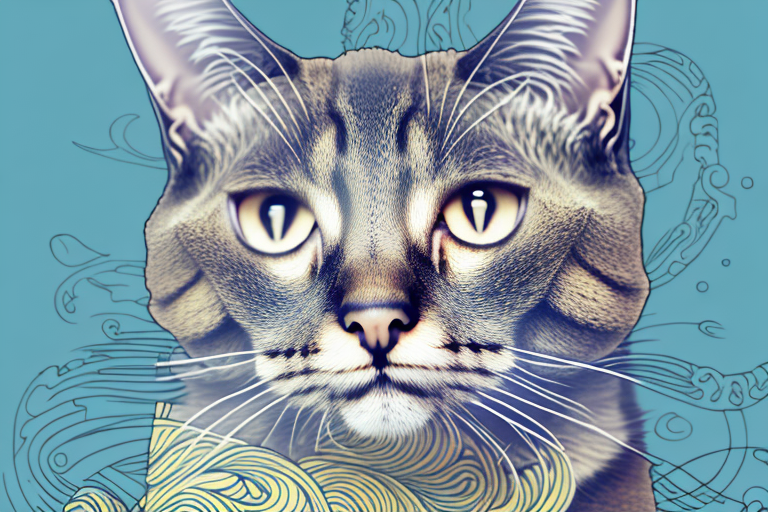Let’s talk about the Coco cat breed, a feline phenomenon that’s stealing hearts worldwide. If you’ve ever wondered what makes this furry friend so special, you’re in the right place. The Coco cat is more than just a pet—it’s a companion, a family member, and a source of endless joy. Whether you’re a seasoned cat lover or a newbie looking for your first furry buddy, this breed has something unique to offer.
Now, before we dive deep into the world of Coco cats, let’s clear the air. This breed isn’t just another pretty face. It’s a mix of intelligence, charm, and sass that will keep you on your toes. If you’re thinking of bringing one of these felines into your home, you better be ready for a lifetime of love—and maybe a few surprises along the way!
So, why should you care about the Coco cat breed? Well, because they’re not your average house cat. These kittens come with a unique set of traits that make them stand out in the feline world. From their playful nature to their loyalty, they’re the perfect blend of independence and affection. Ready to learn more? Let’s get started!
What is the Coco Cat Breed?
First things first, let’s break down what exactly the Coco cat breed is all about. The Coco cat is a relatively new breed, and it’s quickly gaining popularity among cat enthusiasts. It’s known for its striking appearance, friendly demeanor, and playful personality. If you’re looking for a cat that’s not only beautiful but also full of character, the Coco cat might just be your dream pet.
One of the coolest things about the Coco cat is its versatility. They adapt well to different living situations, whether you live in a small apartment or a spacious house. Plus, they’re great with kids and other pets, making them an ideal choice for families. So, if you’re searching for a cat that can fit seamlessly into your lifestyle, the Coco breed might just be your match made in heaven.
Where Did the Coco Cat Originate?
Now, let’s rewind a bit and talk about the origins of the Coco cat. Believe it or not, this breed has an interesting backstory. It’s believed to have originated from a mix of different breeds, including the Siamese and the American Shorthair. This unique lineage gives the Coco cat its distinctive look and personality.
Here’s a fun fact: the name “Coco” doesn’t just sound cute—it actually stands for something meaningful. It’s a nod to the breed’s playful and adventurous nature, which is reminiscent of a mischievous explorer. So, when you adopt a Coco cat, you’re not just getting a pet—you’re adopting a little adventurer who’s ready to explore the world with you!
Physical Characteristics of the Coco Cat
Let’s talk about what makes the Coco cat stand out in the looks department. These felines have a sleek, muscular build that gives them an air of elegance. Their coat is soft and silky, coming in a variety of colors and patterns. Whether you prefer a classic tabby pattern or a more exotic solid color, the Coco cat has something for everyone.
Another striking feature of the Coco cat is their expressive eyes. Most Coco cats have large, almond-shaped eyes that come in shades of blue, green, or gold. These eyes are not only beautiful but also full of personality, making it easy to connect with your furry friend on a deeper level.
Coat Colors and Patterns
When it comes to coat colors and patterns, the Coco cat breed has a lot to offer. You can find them in shades of black, white, gray, and even tortoiseshell. Some Coco cats have tabby markings, while others have solid coats. The variety in appearance means that there’s a Coco cat out there for every taste and preference.
Here’s a quick rundown of some popular coat colors and patterns:
- Classic Tabby
- Solid Black
- Tortoiseshell
- Gray and White
So, whether you’re a fan of bold patterns or subtle elegance, the Coco cat has got you covered!
Temperament and Personality
Now that we’ve covered the physical side of things, let’s dive into the personality of the Coco cat. These felines are known for their friendly and outgoing nature. They’re not shy about showing affection and will often greet you at the door when you come home. If you’re looking for a cat that’s more like a dog in terms of loyalty, the Coco breed might just be your perfect match.
Another great thing about Coco cats is their intelligence. They’re quick learners and can even be trained to do tricks. If you’re up for a challenge, teaching your Coco cat some basic commands can be a fun and rewarding experience. Plus, it’s a great way to bond with your furry friend!
Do Coco Cats Get Along with Other Pets?
One question that often comes up is whether Coco cats get along with other pets. The short answer is yes! These felines are generally friendly and social, making them great companions for dogs, other cats, and even smaller animals like rabbits or guinea pigs. Of course, every cat is different, so it’s always a good idea to introduce them slowly and carefully to any new furry friends.
Here are some tips for introducing your Coco cat to other pets:
- Start with short, supervised interactions
- Provide separate spaces for each animal
- Offer plenty of treats and praise for good behavior
With a little patience and effort, your Coco cat can become best buddies with other pets in no time!
Caring for Your Coco Cat
Taking care of a Coco cat is relatively easy, but there are a few things you should keep in mind. First and foremost, they need a balanced diet to stay healthy and happy. High-quality cat food that’s rich in protein is a must. Additionally, make sure your Coco cat always has access to fresh water.
Grooming is another important aspect of Coco cat care. While their coat is relatively low-maintenance, regular brushing can help keep it shiny and free of tangles. Plus, it’s a great way to bond with your furry friend. Aim for at least a couple of brushing sessions per week to keep their coat in top condition.
Health Concerns to Watch For
Like any breed, the Coco cat can be prone to certain health issues. Some common concerns include dental problems, obesity, and urinary tract infections. Regular vet check-ups are essential to catch any potential issues early on. Additionally, keeping your Coco cat active and at a healthy weight can go a long way in preventing many health problems.
Here are some signs to watch for if you suspect your Coco cat isn’t feeling well:
- Changes in appetite or water intake
- Excessive grooming or hair loss
- Difficulty breathing or coughing
Trust your instincts—if something seems off, it’s always better to err on the side of caution and consult your vet.
Fun Facts About the Coco Cat
Now that we’ve covered the basics, let’s have some fun with a few interesting facts about the Coco cat breed. Did you know that Coco cats are sometimes referred to as “Velcro cats” because of their tendency to stick close to their owners? It’s true—they love being around people and will often follow you from room to room.
Another fun fact is that Coco cats are known for their vocal nature. They’re not shy about expressing themselves and will often “talk” to you with a variety of meows and chirps. Some owners even say their Coco cats have distinct “voices” for different situations, like when they’re hungry or want attention.
Are Coco Cats Hypoallergenic?
One question that often comes up is whether Coco cats are hypoallergenic. While no cat is completely hypoallergenic, some breeds are better for allergy sufferers than others. Unfortunately, the Coco cat isn’t one of them. However, regular grooming and cleaning can help reduce allergens in your home.
Here are some tips for managing pet allergies:
- Use an air purifier in your home
- Wash your hands after handling your cat
- Vacuum regularly to remove pet dander
With a little effort, even allergy sufferers can enjoy the company of a Coco cat!
Choosing the Right Coco Cat for You
So, you’ve decided that a Coco cat is the right pet for you. Great choice! But how do you go about finding the perfect one? Start by doing your research. Look for reputable breeders or rescue organizations that specialize in the Coco cat breed. Make sure to ask plenty of questions about the cat’s health, temperament, and history.
When you’re ready to bring your new furry friend home, make sure you have everything they need. This includes food, litter, toys, and a cozy bed. Introduce them to their new environment slowly and give them plenty of time to adjust. With a little patience and care, your Coco cat will soon feel right at home.
Adopting vs. Buying
One important decision you’ll need to make is whether to adopt or buy a Coco cat. Both options have their pros and cons. Adopting a cat from a rescue organization can be a rewarding experience and gives a homeless animal a second chance at life. On the other hand, buying from a breeder ensures that you’re getting a purebred cat with a known pedigree.
Here are some things to consider when making your decision:
- Adoption fees are usually lower than purchasing from a breeder
- Rescue cats often come already spayed or neutered
- Breeders can provide more information about the cat’s lineage
Ultimately, the choice is yours. Just make sure to do your research and choose the option that’s best for you and your new furry friend.
Conclusion: Why the Coco Cat Breed is Worth It
And there you have it—everything you need to know about the Coco cat breed. From their striking appearance to their playful personalities, these felines are truly one of a kind. Whether you’re a seasoned cat owner or a first-time pet parent, the Coco cat has something special to offer.
So, what are you waiting for? If you’re ready to welcome a new furry friend into your life, the Coco cat might just be the perfect match. Don’t forget to share this article with your fellow cat lovers and let us know what you think in the comments below. Who knows? You might just inspire someone else to adopt their own Coco cat!
Table of Contents
- What is the Coco Cat Breed?
- Where Did the Coco Cat Originate?
- Physical Characteristics of the Coco Cat
- Coat Colors and Patterns
- Temperament and Personality
- Do Coco Cats Get Along with Other Pets?
- Caring for Your Coco Cat
- Health Concerns to Watch For
- Fun Facts About the Coco Cat
- Choosing the Right Coco Cat for You


